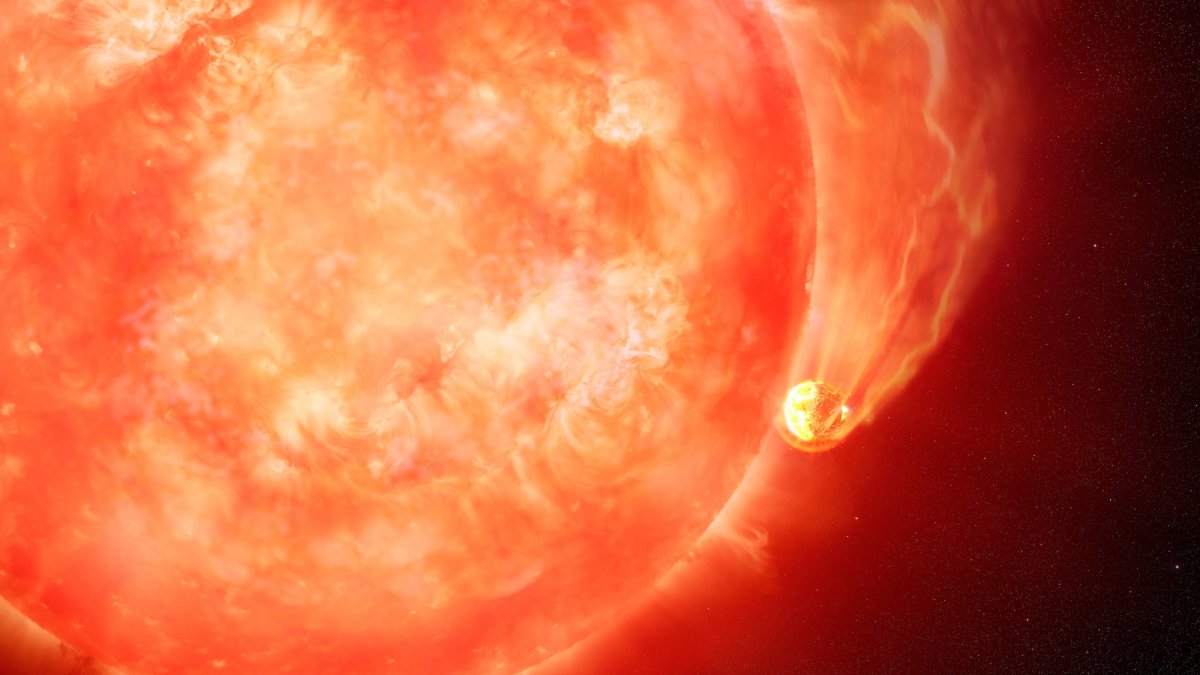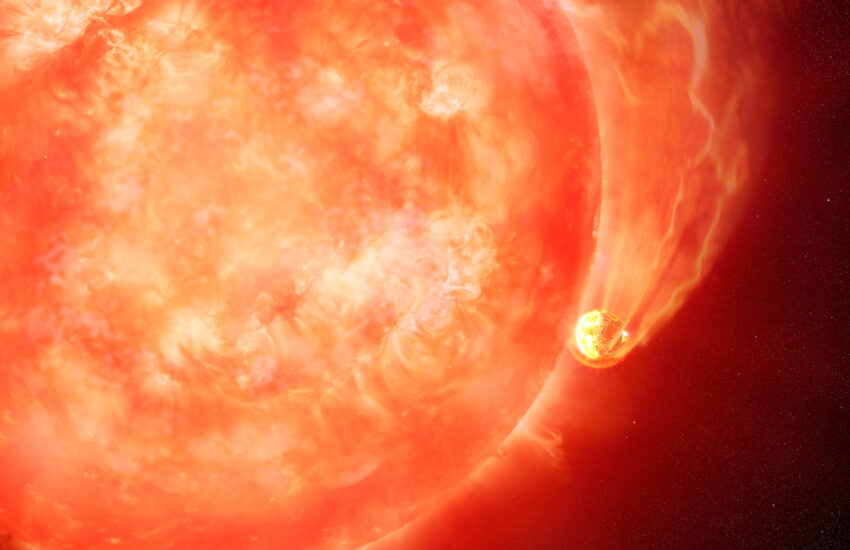A distant exoplanet that shouldn’t be there anymore has continued to mystify astronomers with its existence after new evidence disproved a leading theory for its survival.
The planet, named 8 Ursae Minoris b or Halla, was discovered in 2015, and it has confused scientists as it seemingly should have been engulfed by its star.
This is because the planet’s star, Baekdu (8 UMi), is thought to have expanded out to around 150 percent the size of Halla’s orbit as it grew into a red giant, before collapsing back down to its current size.

International Gemini Observatory/NOIRLab/NSF/AURA/M. Garlick/M. Zamani
Previous research suggested several possible solutions, but a new paper in The Astrophysical Journal Letters has found something that has reopened the mystery of this strange planet.
Halla—located about 520 light years from our solar system—is a Jupiter-like gas giant, and orbits its star in a rapid 93 days, at a distance of around half that between the sun and the Earth.
8 UMi was seen to be burning helium in its core, meaning it had already expanded out into a red giant, a process that occurs when a star runs out of hydrogen fuel and rapidly grows. The size of the star would have meant that it should have expanded far past the orbit of Halla, engulfing the planet. However, Halla still exists.
“Planetary engulfment has catastrophic consequences for either the planet or the star itself—or both. The fact that Halla has managed to persist in the immediate vicinity of a giant star that would have otherwise engulfed it highlights the planet as an extraordinary survivor,” Marc Hon, a NASA Hubble Fellow at the University of Hawaii Institute of Astronomy (UH IfA), said in a statement in June last year.
Previous theories as to how Halla survived suggested that 8UMi was actually once two lower-mass stars that combined as one red giant, which prevented the star from getting large enough to swallow the planet.
However, this theory depends on the age of the star: if it is young, the binary merger is unlikely, while if it’s around 9 billion years old, it’s more probable.
In the new study, the researchers described how they used various methods to predict the age of the star, which emerged in the region of 1.9 to 3.5 billion years ago. This is much younger than the age needed for the merger theory, meaning that this explanation for the planet’s survival may not be correct.
“This is much younger than the timescale that is needed to go though the binary-merger process,” the researchers wrote in the paper.
Other theories of how Halla survived suggest that the planet may have originally been further away from the star and gotten closer since its expansion, or even that Halla only formed very recently after the star shrank back down.
Additionally, in the new paper, the researchers noted that the mass of the star is about 13 percent greater than they initially thought, which may mean that 8 UMi is more compact that previously estimated. This could mean that Halla’s observed rate of orbiting the star actually corresponds to a more distant orbit, and may have been outside of the expansion radius of the star this whole time.
However, further investigation is needed to solve this cosmic mystery once and for all, the researchers said.
Do you have a tip on a science story that Newsweek should be covering? Do you have a question about exoplanets? Let us know via science@newsweek.com.
Uncommon Knowledge
Newsweek is committed to challenging conventional wisdom and finding connections in the search for common ground.
Newsweek is committed to challenging conventional wisdom and finding connections in the search for common ground.

